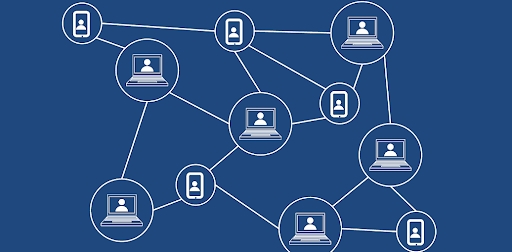Why Decentralized Data Storage Could be the Next Big Thing in Web 3.0
Disclaimer: The Industry Talk section features insights by crypto industry players and is not a part of the editorial content of Cryptonews.com.

The internet is one of the most significant advancements in today’s civilization, over 5 billion people across the globe have access to the world wide web. While it may seem like an obvious privilege, things were not the same back in the day, it is only recently that internet adoption rates have spiked. The advent of portable devices such as laptops and smartphones has made it seamless for anyone to use the internet.
That said, the internet traces its roots to the 1960s when the U.S Department of Defense introduced packet switching. During this period, only small pieces of data could be transferred from one user to another. Well, that is no longer the case; the internet is now a fundamental pillar in modern-day communication and information sharing between individuals, governments and corporations.
But how safe is the internet in its current state? There have been several criticisms in the recent past, with stakeholders raising alarm on data integrity issues. As it stands, most of the data collected through the internet is stored in servers run by big tech firms such as Google, Alibaba and Microsoft. Unfortunately, these companies have their own financial and political interests, which sometimes collide with the data protection mandate.
According to a 2020 transparency report by Google, governments made over 110,000 requests for corporations handling big data to disclose users’ information. Surprisingly, 76% of these requests were accepted, leaving the affected users exposed to scrutiny without any consent. Is it really a free world if authorities can sensor the internet through centralized institutions? Your guess is as good as mine; the freedom is still limited.
Web 3.0: A Community-Governed Internet
Thanks to the rise of cryptocurrencies, the term Web 3.0 is slowly becoming a sensation. What most people are yet to discover is that Web 3.0 is the third iteration of the internet; unlike its predecessors, this new web is built on the core principle of decentralization. In other words, Web 3.0 introduces an era where internet users will have a say on how their data is monetized and the development of futuristic applications.
So, what are the infrastructures behind a community-governed internet? At the core, blockchain technology will play an integral role in eliminating third-party dominance in digital ecosystems. It is already happening in the crypto industry, with Decentralized Finance (DeFi) and Non-fungible token (NFT) applications leading the way. However, there is still a challenge in data storage, given that most DApps rely on centralized cloud storage services.
The big question then becomes; how can innovators fully decentralize the Web 3.0 ecosystem? It is quite evident that it boils down to the creation of decentralized data storage servers which will enable internet users to directly control their on-chain data.
Decentralized Data Storage
As mentioned in the introduction, data storage is largely centralized, the likes of Google and Microsoft are making a dime through their cloud storage services. Luckily, the world is waking up to the reality, recent global tensions have proven that internet users are not safe in the hands of corporations. It is high time we moved to decentralized cloud solutions such as the one offered by tomi, a Web 3.0 server designed to promote free speech.
Tomi’s decentralized data storage solution focuses on a distributed cloud model where users can run micro data firms through the MP1 server. Contrary to the likes of Azure and Google Cloud, the MP1 server allows internet users to store their own data, ultimately eliminating the reliance on a single point of data storage. In this model, an attack on one of the servers would only result in the loss of a partial file as opposed to the whole cloud being compromised.
More interestingly, the MP1 server can also be used for other functions, including complex simulations, accelerated AI, VR applications and blockchain GPU mining. The latter utility is particularly important in opening up the crypto mining space; currently, 91% of the global mining power is concentrated within 8 countries. Tomi’s MP1 server comes as a portable device that anyone can easily plug in to start mining cryptocurrencies.
As for governance, Tomi’s distributed internet will follow the Decentralized Autonomous (DAO) model powered by a native token. Ideally, holders of the TOMI governance token will be able to vote on proposals submitted to the DAO, effectively introducing a community-driven internet platform. While the project is still in its nascent stages, Tomi is set to roll out most of the infrastructure within the next one year.
Looking Into the Horizon
With the world embracing technological advancements, it is a no-brainer that the internet will soon evolve to the third iteration. The trend is already catching up with big tech, Facebook (now Meta) went to the extent of changing its name to join the Web 3.0 bandwagon. According to Zuckerberg, the next era of digital ecosystems will be designed through a collaborative effort instead of the traditional siloed model,
“The metaverse will not be created by one company. It will be built by creators and developers making new experiences and digital items that are interoperable and unlock a massively larger creative economy than the one constrained by today’s platforms and their policies.”
Going by these developments, it is only a matter of time before internet users appreciate the value proposition of decentralized storage platforms. The new dawn will give power back to the people in many ways, including data control and monetization.



